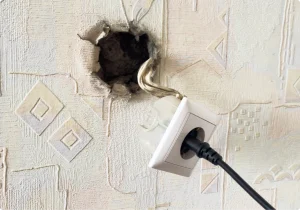Travertine is a form of stone flooring that is extracted from the soil and processed into tiles for use in architecture. For thousands of years, it has been employed in a range of construction applications. Travertine is a type of limestone that is as hard as a rock, yet it is extremely permeable when compared to other natural stone construction materials. As a result, it has some inherent vulnerabilities that must be taken into account when cleaning and caring for these materials. This encompasses both long-term and routine maintenance issues, as well as specific guidelines and precautions that users should take when dealing with these surfaces.
How Often Should Travertine Flooring Be Cleaned?
With travertine floors, regular sweeping or vacuuming, as well as mopping, should be done regularly, or whenever the surface is filthy. Sweeping or vacuuming the floor eliminates microscopic particles that can scratch the tile’s surface. These microscopic particles can dull the material’s lustre and gloss over time, eliminating the protective sealant coat and exposing the stone beneath to discolouration and stains. There are three parts to Travertine Cleaning and Repair of floor, in addition to regular cleaning:
- During regular maintenance, disinfect the floors.
- Depending on how dirty their floor gets, they should clean the grout lines every several months.
- Most stone flooring manufacturers recommend surface-sealing travertine every three to five years, though harsh chemicals and continuous use may wear down the sealer sooner, necessitating extra treatments.
Sweep or vacuum the floor –
To remove small particles of dirt and grit, sweep or vacuum the floor.
Mop the Floor –
Using a sponge or mop that is nearly wrung dry, apply a tiny amount of plain warm water to the floor so that the travertine surface is just barely damp. Water should not be sprayed on travertine tiles because it can seep through the sealant and into the grout lines, causing discolouration, deterioration, mould and mildew growth.
Disinfect the Floor –
Add a spoonful of mild, non-acidic dish soap to a gallon of water to disinfect the floor. With this solution, damp-mop the floor. Mop with clean water a second time to get rid of any leftover residue. It’s also a good idea to dry the area with a towel.
Clean the Grout Lines –
Cleaning the grout lines surrounding travertine tiles can be difficult because users don’t want to scratch the stone, but they do need something abrasive to do it. If the user needs to clean the grout lines, make a gritty paste with equal parts baking soda and water. Scrub this slightly abrasive material into the grout with a small brush, being careful not to scrape or etch the tile edges with the tool. Also, try cleaning the grout with a specialist prepared stone cleaner.
Travertine may be kept clean by using mild cleaners and paying attention to the grout. When cleaning travertine floors, avoid using abrasive chemical cleaners or anything acidic. Travertine stone is an alkaline mineral by nature, and it can stain and discolour when exposed to acidic substances.



